Bonnington Irish Moss Bottle

In 1850, George Bonnington arrived in Nelson, New Zealand as an expat from Derbyshire, England. He would go on to develop Barrington's Irish Moss in the 1860s, which is still in production today and available at many New Zealand supermarkets and pharmacies. He went on to have a successful career with a pharmacy in Christchurch (pictured left/above) as well as a political career on the Christchurch City Council and Pharmaceutical Society of New Zealand.
The success of Bonnington's pharmacy brought a host of patients - and sometimes some morbid surprises. In 1904, an unidentified women dropped dead on the premises of Bonnington's according to the Star. A victim of heart, lung and kidney diseases, her death was ruled to have been of natural causes. Interestingly, despite her numerous ailments, the inquest's doctor attributed chest damage to corset tightlacing. This was perhaps an insight into the misogyny of the medical practice, as not only was tightlacing not practiced by many Victorian women apart from a select, fashionable elite, but also because "one disease after another" that Victorian physicians ascribed to corsets "found another explanation which was unrelated to the corset" (Schwartz 1979, 567).

Bonnington's Irish Moss wasn't without its own secrets, hidden in its advertised "sixteen powerful ingredients" that claimed to be "free from harmful narcotics and drugs". It's success perhaps could be attributed to the chloroform it contained, a powerful sedative, europhiant and anaesthetic. Chloroform was so potent that Queen Victoria used it to ease the pain of childbirth! Barrington's Irish Moss’ main ingredient, however, was carageenan or 'Irish Moss', which was thought to have relieve inflammation associated with coughs. While there is currently no scientific evidence for this, the continued production of Bonnington's Irish Moss — formulated without chloroform — testifies to its continued popularity as a natural remedy.
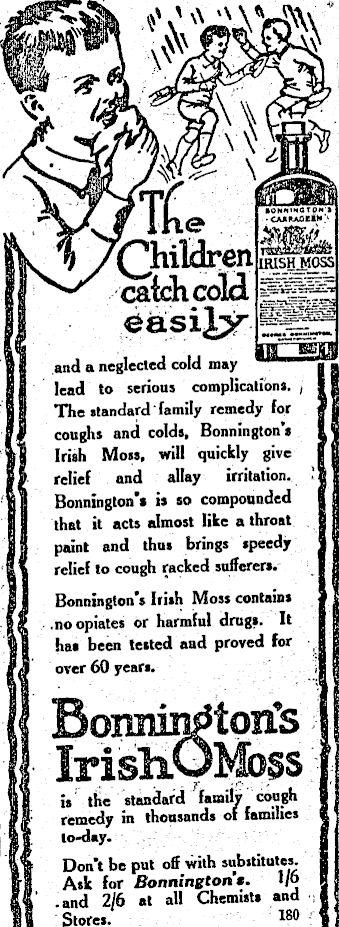 |  |
|---|---|
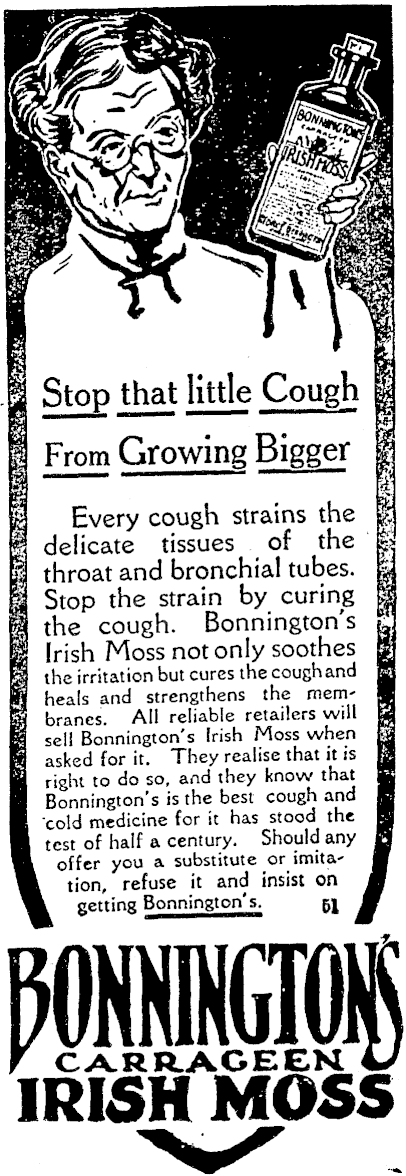 | 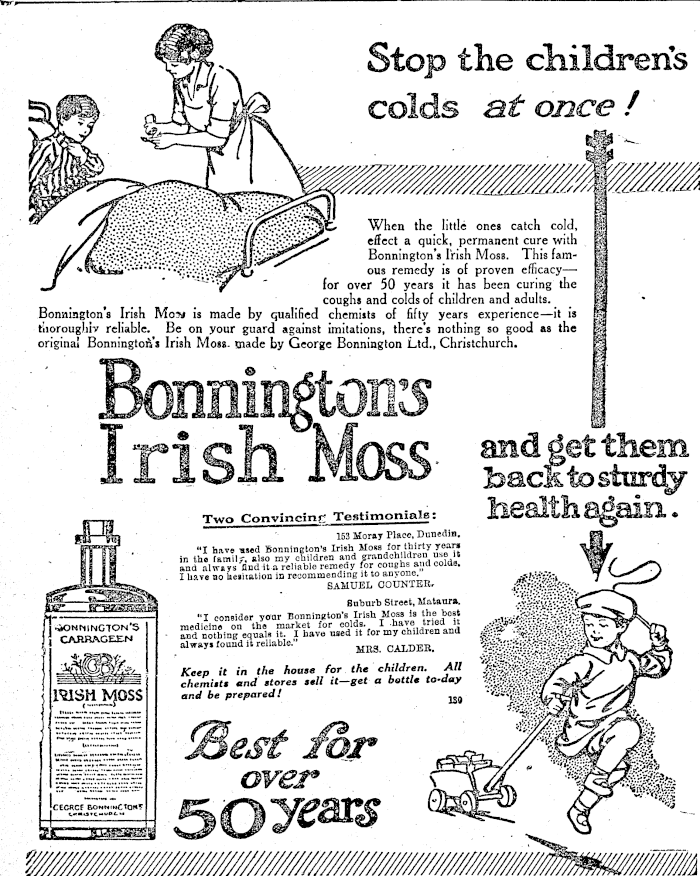 |
 | 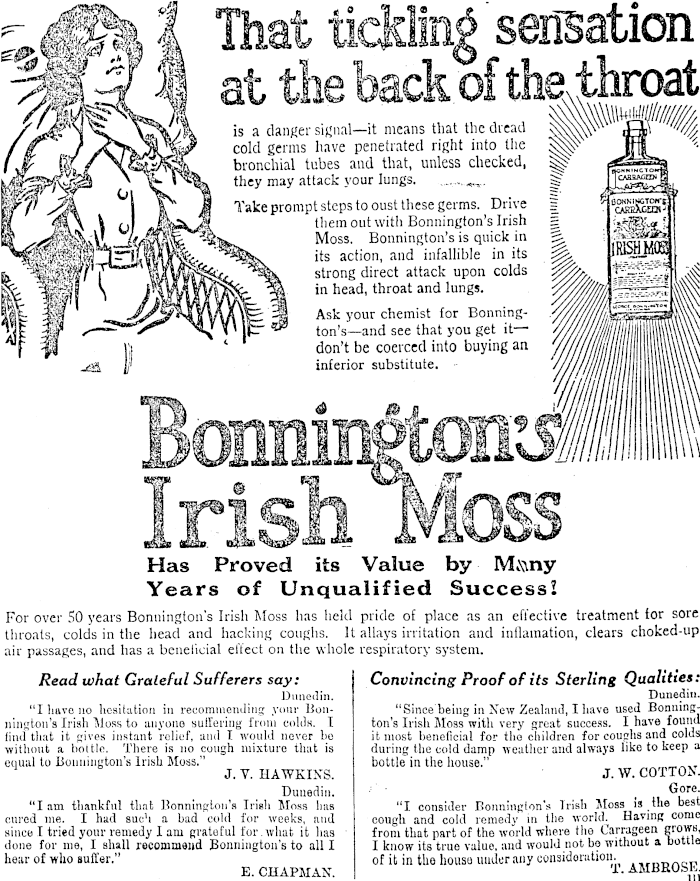 |
 | 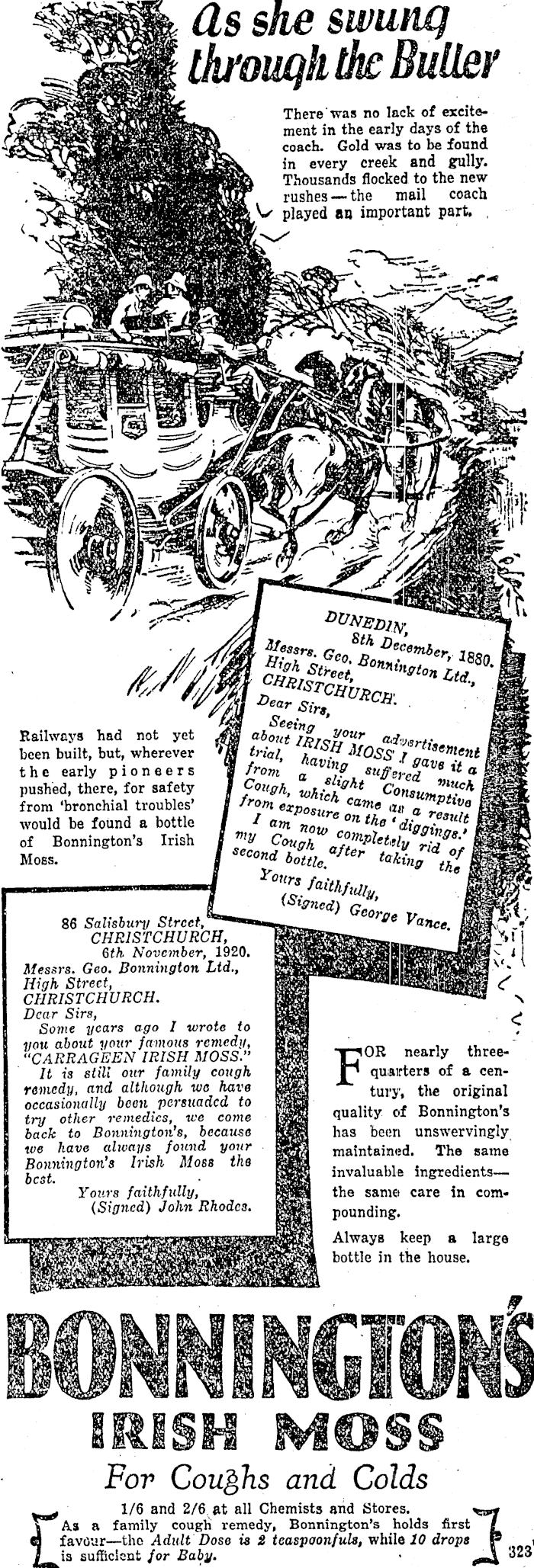 |
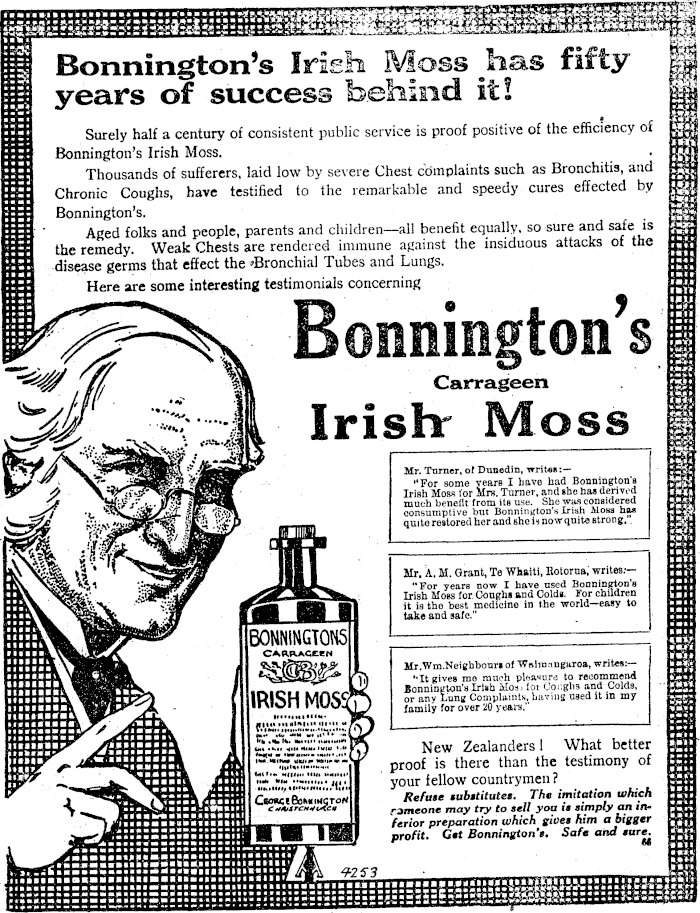 | 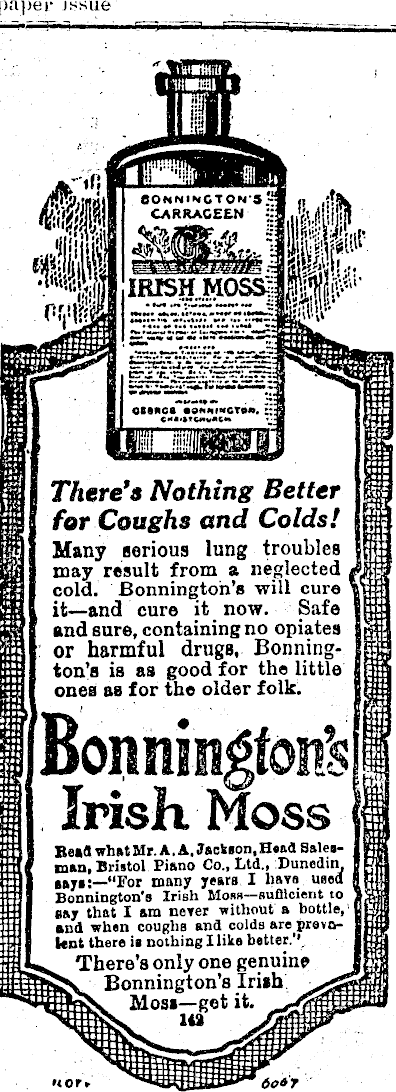 |
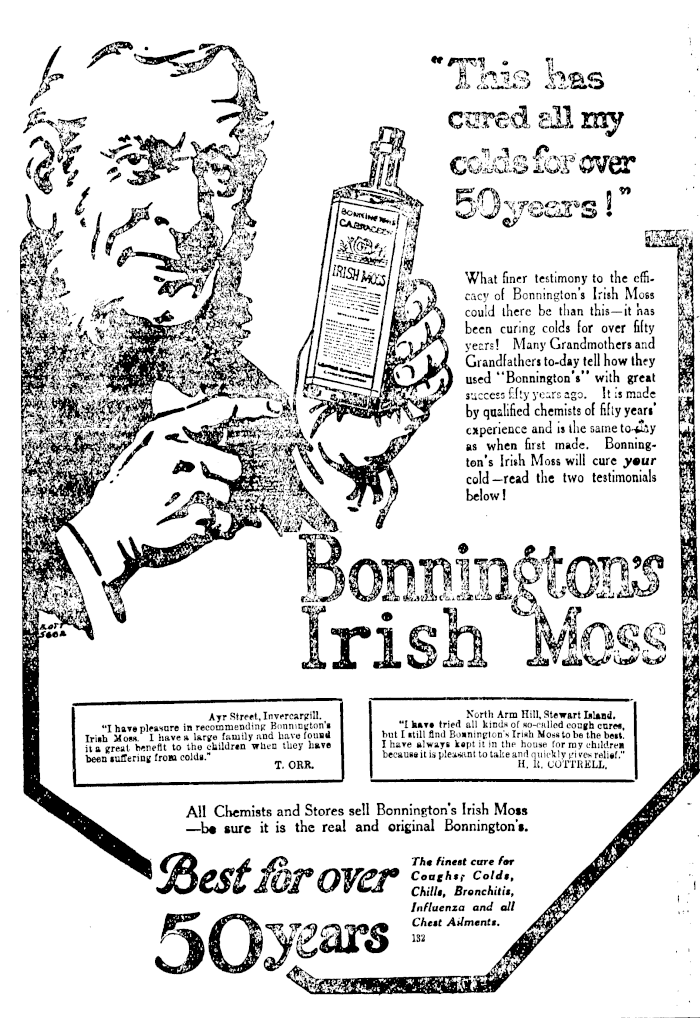 |  |
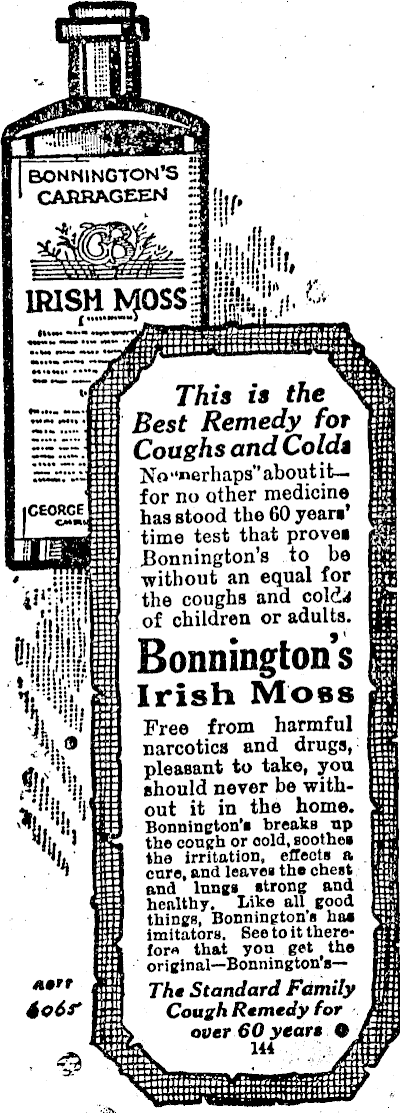 | 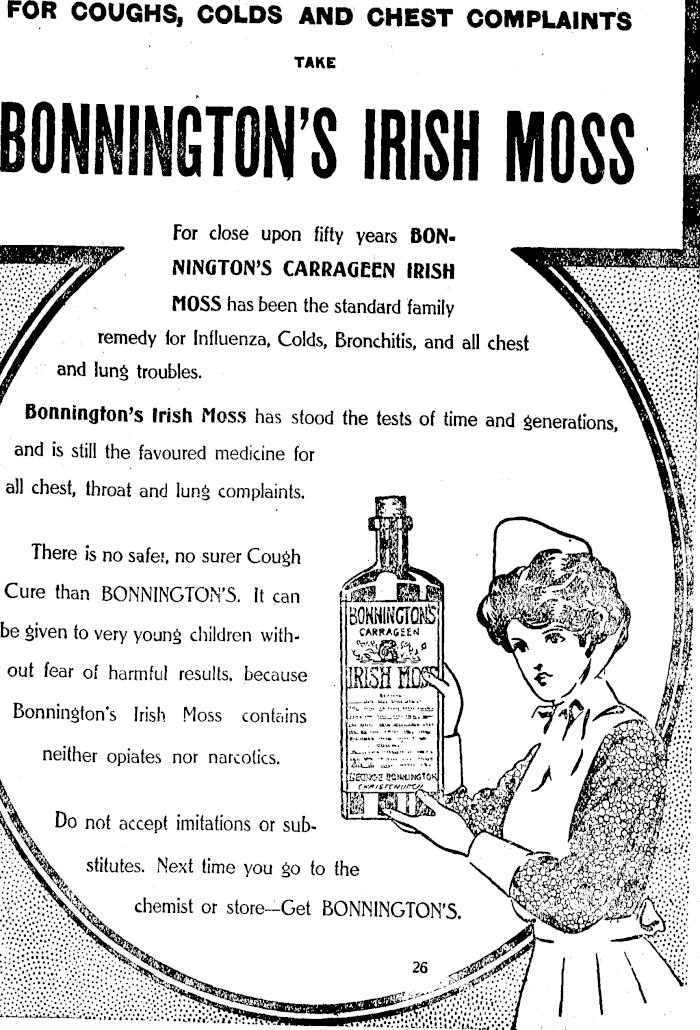 |
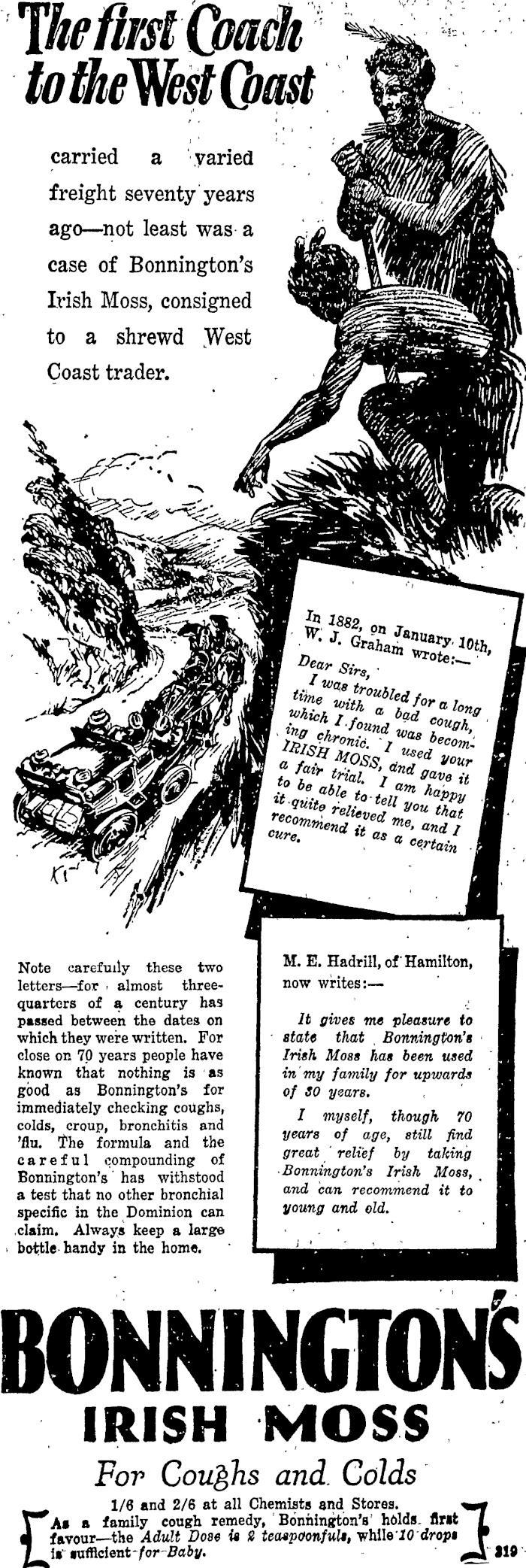 | 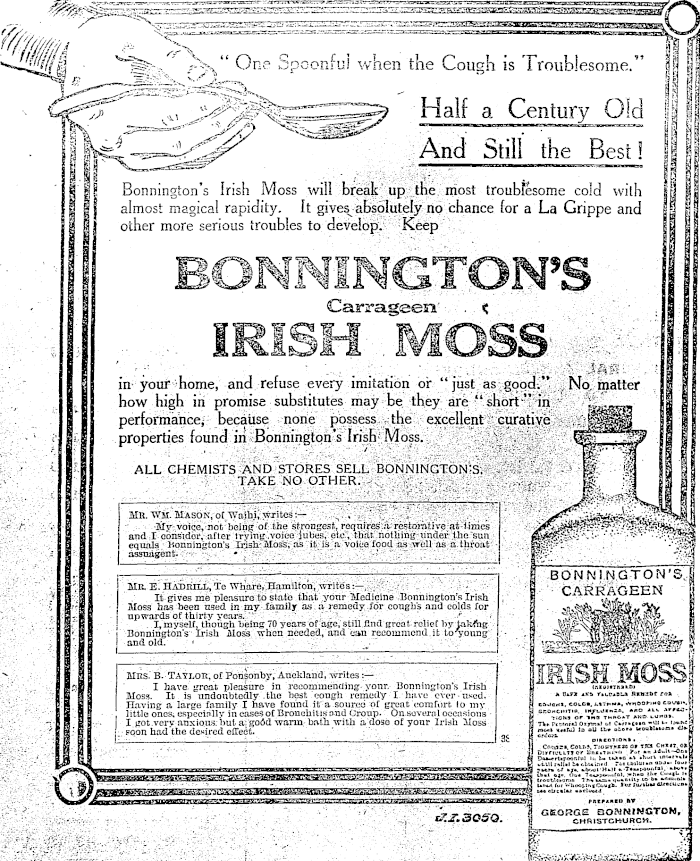 |
![F W Niven & Co. :[Cameron & Christie, H G Gibbons, Bonnington's Irish Moss. 1895].](https://static.wixstatic.com/media/2d6830_ff2c4fa50eb64c04bb606aa6416475d4~mv2.jpg/v1/fill/w_250,h_321,al_c,q_90,enc_auto/2d6830_ff2c4fa50eb64c04bb606aa6416475d4~mv2.jpg) |  |
 |
Bonnington's aligned their own success to Christchurch's growth from "a very small town" into "a great City." The promoted themselves as ‘quintessentially Kiwi’ and as a local Christchurch chemist. Their Irish Moss bottles are frequently found on archaeological sites in Christchurch, which, along with the numerous advertisements found in New Zealand newspapers (left), emphasizes the ubiquity of Bonnington's Irish Moss in historic Christchurch households.
Sources:
Bonnington's building, Christchurch. Webb, Steffano, 1880-1967: Collection of negatives. Ref: 1/1-003977-G. Alexander Turnbull Library, Wellington, New Zealand. /records/22712093
Donaldson, B, G. Hume, and S. Costello. Antique Bottle and Containers of Christchurch and District. Christchurch, N.Z. Christchurch Antique Bottles and Collectibles Club, 1990.
Greymouth Evening Star, 2 November 1918, Page 7.
le Couteur, Claire, Pills and Potions at the Cotter Medical history Trust. Dunedin: Otago University Press, 104.
Manawatu Standard, Volume XLIV, Issue 995, 19 April 1924, Page 12.
Norris, Pauline and Rosemary Beresford. "Medicines and remedies - Plants, pills and poultices before 1900." Te Ara - the Encyclopedia of New Zealand, http://www.TeAra.govt.nz/en/zoomify/28217/advertisement-for-bonningtons-irish-moss (accessed 17 September 2021)
Press, Volume LXI, Issue 11806, 2 February 1904, Page 6.
Schwarz, G. S. "Society, physicians, and the corset." Bulletin of the New York Academy 55, no. 6 (1979): 551-60.
Star (Christchurch), Issue 7923, 30 January 1904, Page 5.
Star (Christchurch), Issue 9256, 8 June 1908, Page 4.